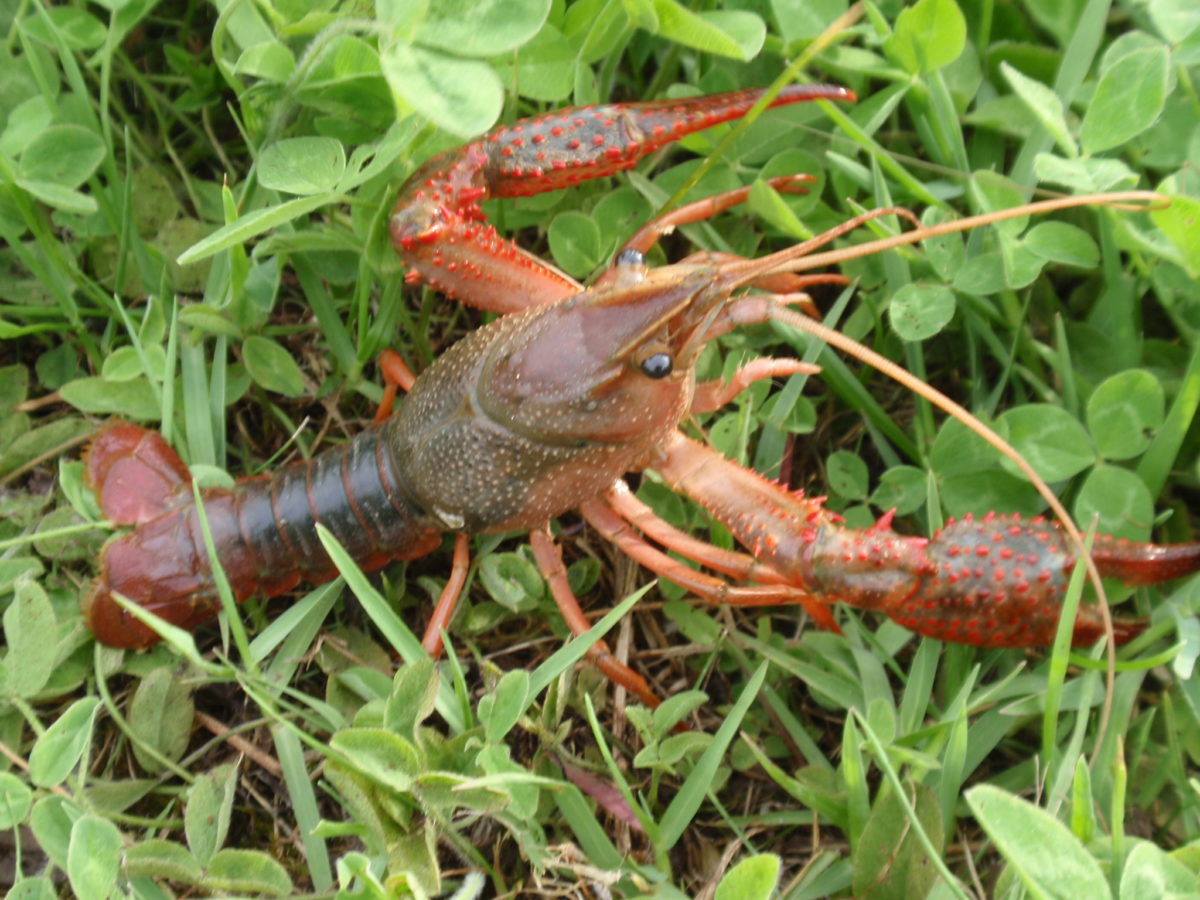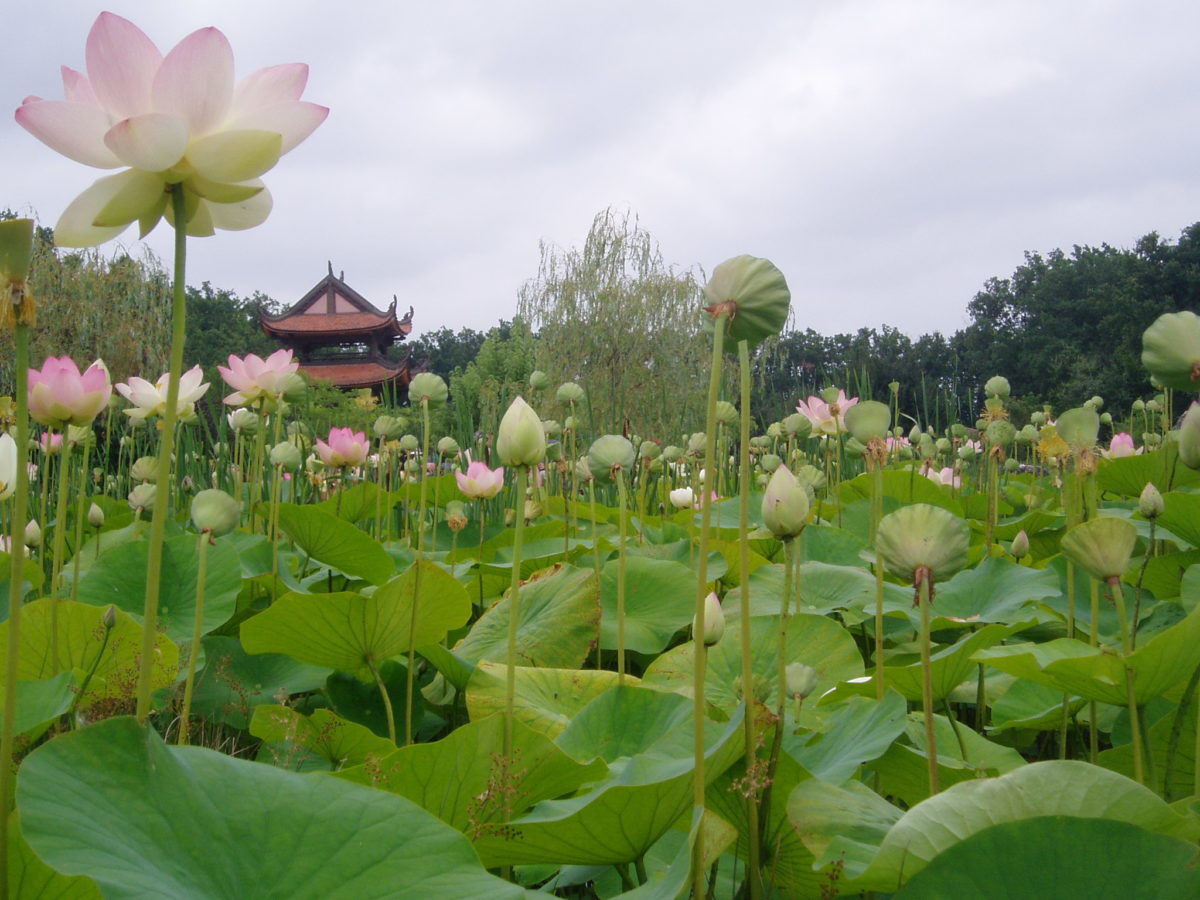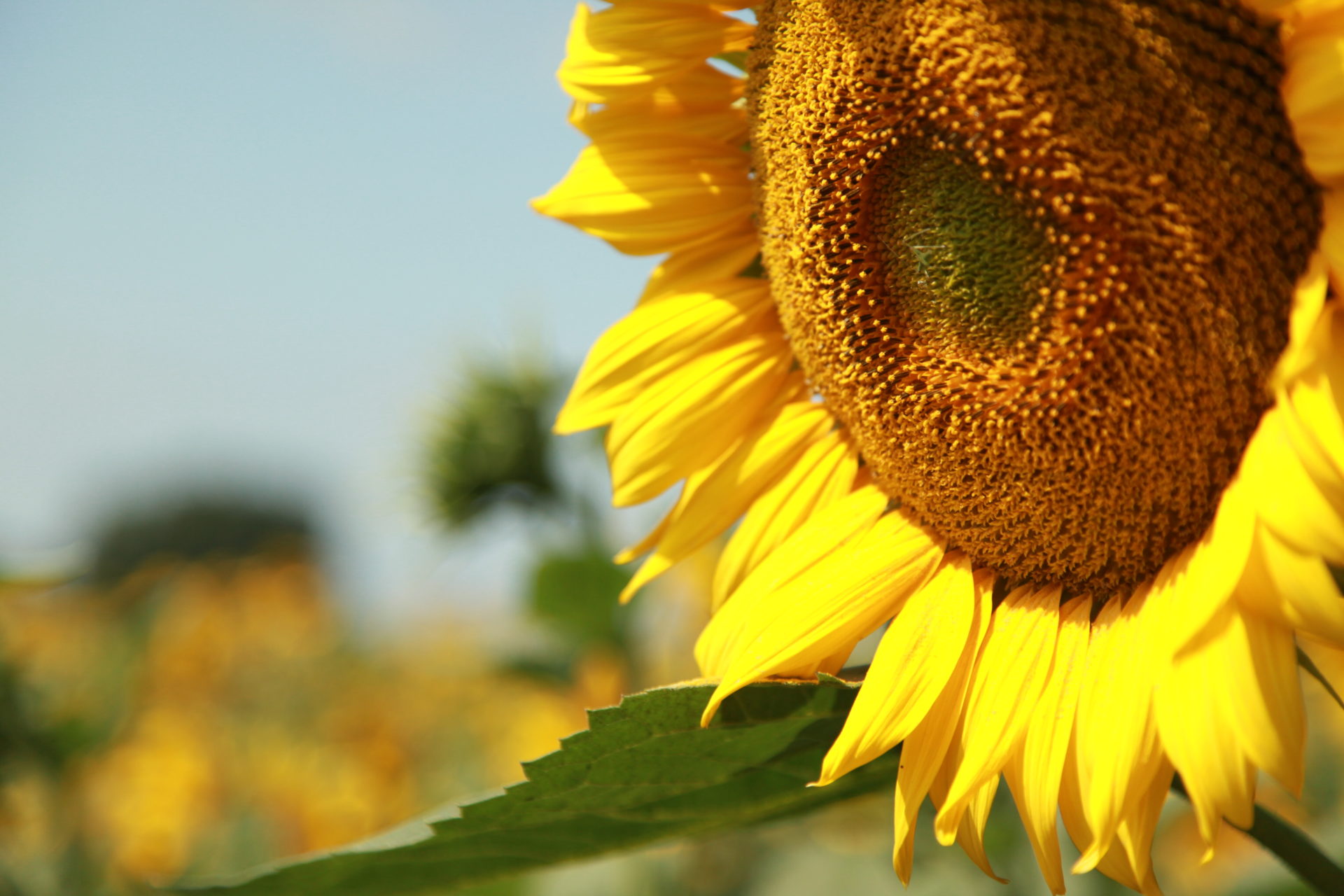By Lowie van Liere

Many participants were shocked during the Path of the Buddha retreat when they saw Upper Hamlet’s lotus pond. They had hoped to see beautiful flowering lotuses but instead observed turbid water. All lotus plants had vanished. The pond had been invaded by crayfish. When it was quiet during the evening, tiny movements could be observed in the water at the pond’s borders.
By Lowie van Liere

Many participants were shocked during the Path of the Buddha retreat when they saw Upper Hamlet’s lotus pond. They had hoped to see beautiful flowering lotuses but instead observed turbid water. All lotus plants had vanished. The pond had been invaded by crayfish. When it was quiet during the evening, tiny movements could be observed in the water at the pond’s borders. Crayfish were having their dinner, consisting of the remaining plants, insects, and even small frogs. In the grass surrounding the pond, I found a number of beautiful red and black crayfish pincers. The remnants of the crayfish had ended up in the stomach of a heron.
In a very short period the pond had changed, with hardly any plants left in the water. The omnivorous crayfish were obviously very fond of the young lotus shoots and perhaps even the seeds. The turbidity of the water is caused by the crayfish digging in the mud to find food and to protect themselves from potential predation. When the other retreat participants had their evening walking meditation, I went back to the pond equipped with a small fishing net. I caught two species of crayfish, both non-natives in this region. The narrow-clawed crayfish (Astacus leptodactylus) comes from the Black Sea area, and the Louisiana crayfish (Procambarus clarkia) originates from Mexico and Florida. I didn’t find any European noble crayfish (Astacus astacus). This species is threatened with extinction because of the invasion of numerous “alien” species. But remember that the lotus, also, isn’t native to France.
The next night I slowly walked around the pond, counting crayfish eating plants at the water-land transition. Crayfish meditation. I found 130 crayfish, which means that the total number of crayfish in the pond may very well exceed one thousand.
How did the crayfish reach the pond? There are a few possible explanations. For example, someone may have had an aquarium and bought several tiny crayfish. But they grew. And then they ended up in ponds and ditches in the neighbourhood. Restaurants are a possible source, too, but there aren’t any near Upper Hamlet.
Crayfish are able to walk across land, so they might have come from the water reservoirs that irrigate the adjoining vineyards. French farmers are known to cultivate crayfish for consumption. However, the nearest reservoir is more than five hundred meters away, and the crayfish would have had to walk across much dry, hard ground. Besides, one hundred meters beyond the first pond is another with very clear water, which still has lotus flowers growing and flowering in it. Why hadn’t the crayfish, or at least some of them, walked the farther distance to this second pond? When I asked Brother Phap Dung, he knew: “That’s where Thay lives.”
Brother Phap Dung knew my background as an aquatic ecologist, and he asked me what could be done to restore lotuses in the pond. Several measures sprang to mind. Small pike-perches could be introduced because they like murky water and crayfish. Unfortunately, when the water became clear again, they would have to be replaced with small pikes, which like clear water and dense vegetation. Even better would be an Asiatic fish of prey that feels at home in dense vegetation and eats crayfish, but the only example I could think of, the carp, also likes plant sprouts. Neither herons nor eels could be the solution: the quietness of Upper Hamlet is too lively for a heron population, and with the eel (threatened with extinction), one does not perform experiments.
A smile was the answer to all my scientific fuss. Phap Dung proposed that the monks should temporarily stop their vegan way of life and put crayfish, hand caught, on the menu. He laughed heartily and found his proposal a good joke. But the genuine answer that followed was a real Dharma teaching: “In the past, the pond was there for lotus plants and flowers; in the here and the now, the pond is there for crayfish.”

In many Dharma talks, Thay speaks of the exercise of detachment. Not being attached, for example, to lotus plants. And now? As I write, a pair of crayfish pincers left by a heron lie in front of me. Fifteen centimeters of power, beauty, and sharpness.
And perhaps the lotus plants and flowers will return. When the food for crayfish is gone, they may leave the pond. Then we will have the mud back. And if the crayfish have left enough seeds, we soon will see the lotus flowering again in the Upper Hamlet pond. Some years after that, crayfish may appear again. So, if we look deeply at the present crayfish in the pond, we see the lotus, and, of course, the mud. Simply interbeing.
THIS STORY WAS PREVIOUSLY PUBLISHED (IN DUTCH) IN THE DUTCH SANGHA MAGAZINE, DE KLANKSCHALL (THE MINDFULNESS BELL). THANKS ARE DUE TO BROTHER PHAP DUNG FOR PLEASANT DISCUSSIONS AND TEACHINGS, AND TO JOLIJN ZEGWARRD FOR LINGUISTIC HELP.

Lowie van Liere, Great Vow of the Heart, is an aquatic ecologist from the Netherlands with some experience in ecosystem recovery. He represents the Party for the Animals in the Water Authority of Rijnland.

